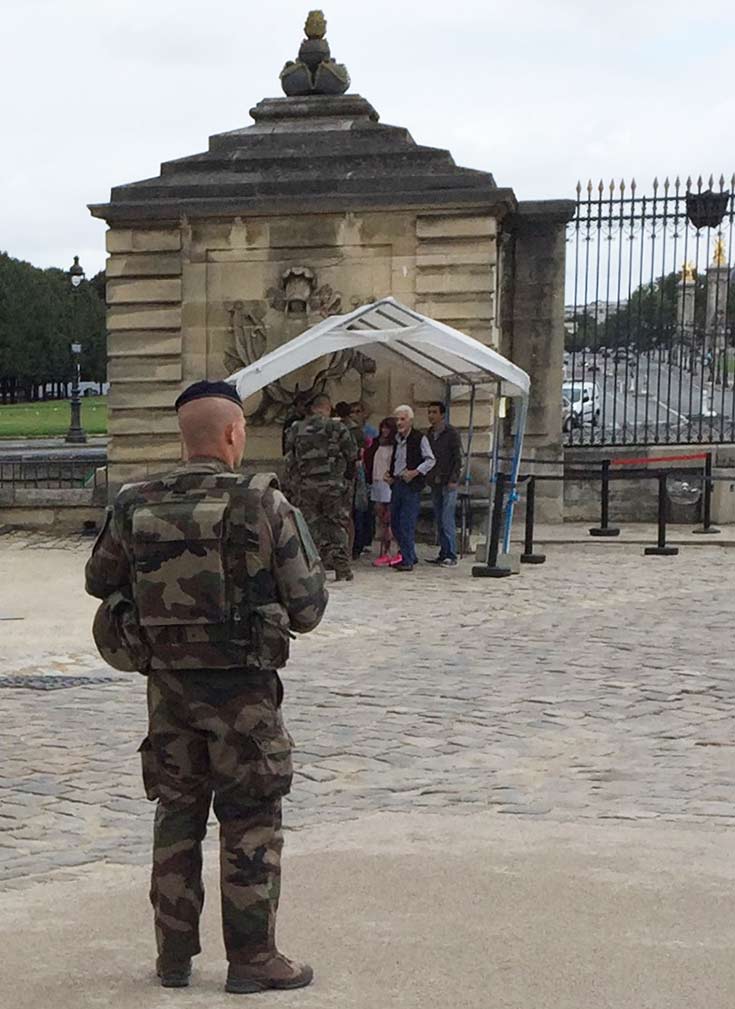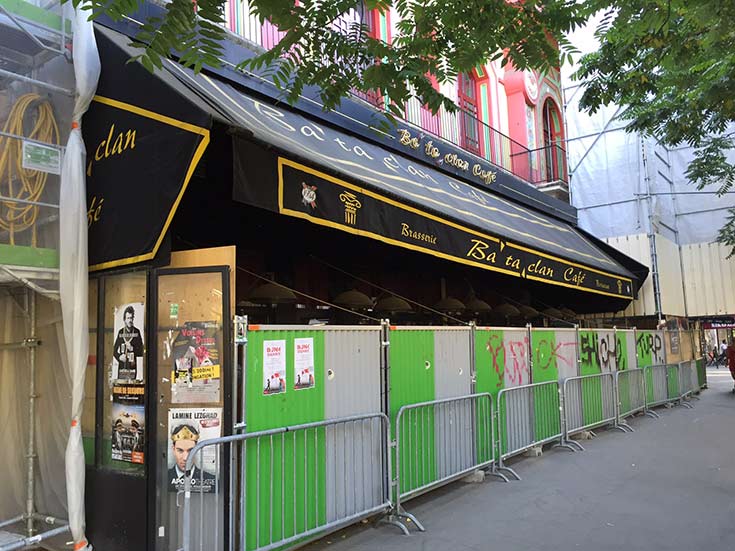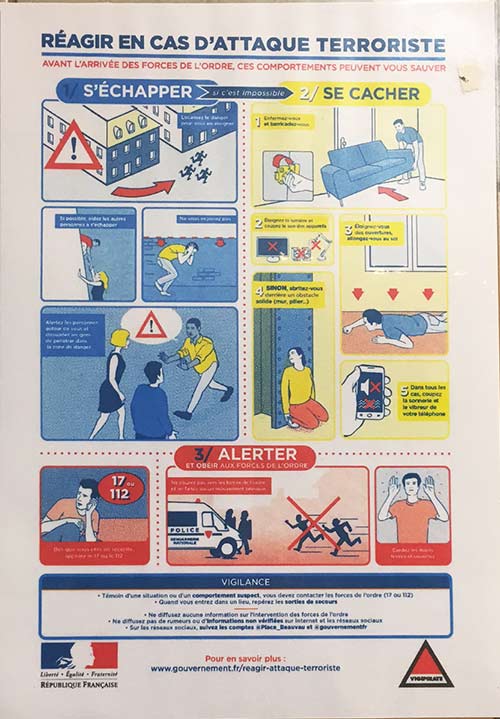Recent events affect tourism in France
Tourist visitor numbers are down in Paris, following terrorist incidents, flooding (CRJ 12:4) and public strikes, report Rob McAlister and Emily Hough.

Summer is in full swing here, but with tourism down dramatically, Paris is still experiencing the effects of recent events. Retail and hotel sectors are suffering significantly according to the big chains.
With a visible high profile security presence everywhere, from iconic landmarks to bag searches in most stores, it's easy to see why the perception of additional attacks are high in people's minds.
Negative media has had the most effect on the Asian and Middle East tourism trade, with many tourists perceiving Europe to be virtually on a war footing and far too dangerous to visit.
The BBC says that flight reservations suggest destinations struggling to attract visitors after terrorist attacks will continue to see a fall in international arrivals. In a report, it predicts that Turkey will be hardest hit, with bookings for September to December expected to be down by 52 per cent on the same period last year. Bookings to France in general are down by nearly 20 per cent over the same period.
However, a report says: “Figures from the Tunisian Tourist Board show that there has been an increase in the number of visitors from Algeria and Russia.
“Between July 2014 and July 2016 the number of Russian tourists visiting Tunisia has more than doubled from 63,054 to 131,434. The number of Algerian tourists has tripled from 65,000 in 2014 to 194,370 over the same period.”
The regional tourism office for Paris reported figures for the first half of 2016 this week, showing that the drop was especially high among Japanese, Russian and Chinese visitors.
The Bataclan Theatre in Paris is still closed (as pictured below) and is not expected to be reopened before November, a year since the attack took place, killing 89 people.

Emergency services are going about their normal business, but flashing sirens attract much more attention and you can people are visibly being more attentive to these events.
Life still goes on: people heading to work, tourists eating and drinking outside on the sunny boulevards, but that normality benchmark has shifted significantly, whether consciously or unconsciously.
In the South of France, the Promenade des Anglais – scene of the lorry attack on Bastille Day that killed 86 people and injured more than 300 others – was quiet in August, with poignant floral memorials marking areas along the seafront.
After these attacks, the French Government stated on July 17, 2016, that it would be increasing the number of its forces with 9,000 police and gendarme jobs created over the Government’s five-year term, as well as strengthening its domestic intelligence personnel numbers. In a statement it said: “The Interior Minister has also set in motion a new national blueprint for the intervention of forces throughout the country and modernised the way first responders – police from the BAC (anti-crime brigade) and gendarmes from the PSIG (monitoring and intervention platoons) – are equipped and armed.”
The Government added that it had already adapted its legal tools, with three anti-terrorist acts and an intelligence act.
The statement continued: “We shall also be responding with resolute action to prevent radicalisation. As early as 2014, a comprehensive plan to combat jihadist networks was launched, with – among other things – the creation of a hotline for families that has already enabled more than 5,000 individuals to be identified and many departures to be prevented. The fight against radicalisation is a fully-identified priority, and on 9 May the government announced a comprehensive plan of 80 measures to combat radicalisation and terrorism, in particular with the creation of one rehabilitation and citizenship centre per region by the end of 2017.”
The first rehabilitation and citizenship centre will open in Indre-et-Loire on September 1, 2016.
The presence of armed military personnel in Nice Airport was highly visible, and soldiers were patrolling the tourist hotspot of Port Grimaud in August. Even in rural areas, a high, regular and visible police presence was evident.

The French authorities appear to be adept at public information and warnings, as seen by the advice on what to do in a terrorist attack posted in the facilities at a motorway service station, illustrated right.
In August, the country was gripped by a fierce heatwave; numerous advice leaflets on how to keep cool and hydrated were distributed to public places and the overhead motorway gantry signs provided advice for drivers and passengers on staying safe during the extreme heat.
Foreign Minister Jean-Marc Ayrault has called a meeting for early September to find ways to revive tourism, which represents about seven per cent of the French economy. He said: “In an increasingly competitive environment, this will provide an opportunity to take stock of the implementation of the measures launched last year. The aim of these measures is to strengthen France’s tourism sector as well as put together a new road map, notably by focusing on investment, security and the development of synergy between all tourism stakeholders in the regions.”
Robert McAlister is a Member of CRJ's Editorial Advisory Panel, read his article on hostile environments in CRJ 12:4; Emily Hough is Editor in Chief of CRJ
Rob McAlister and Emily Hough, 01/09/2016